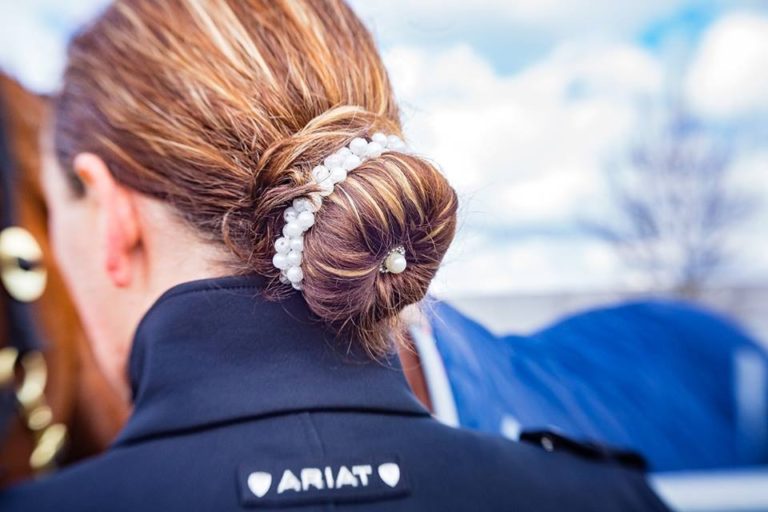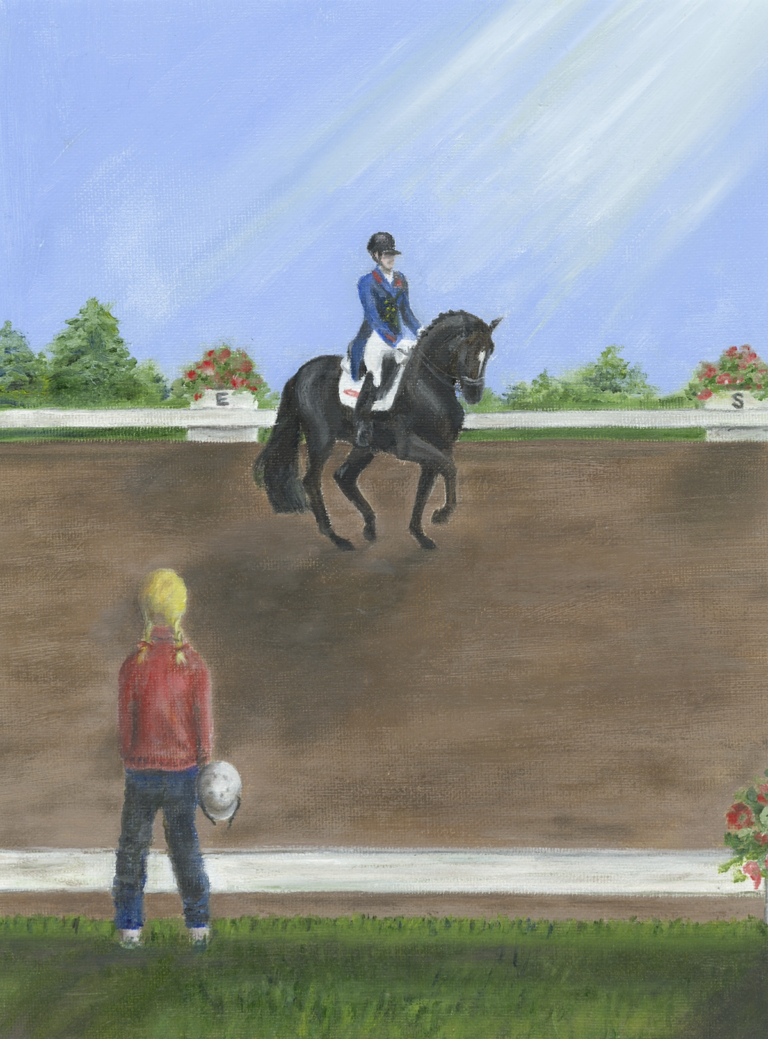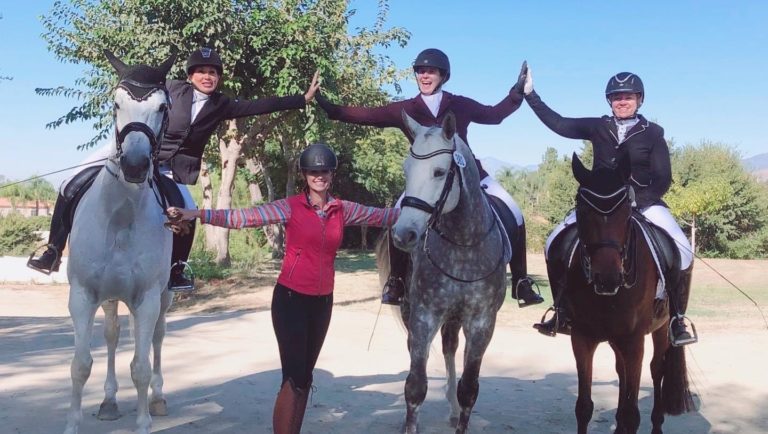Q: My doctor recommended that I do more cardiovascular exercise (I have no health problems). I ride dressage five days a week, but my doctor (who is not an equestrian) said riding is not really cardio work. I don’t believe him since riding my warmblood gelding can get me quite out of breath, and I believe I’m quite fit. What is your opinion? Is dressage riding appropriate cardiovascular exercise?
Shawna Caine
Palm Beach, Florida
Beth Glosten, MD
A: This question is best answered by looking at the definition of “cardiovascular exercise.” Also termed aerobic (with oxygen) exercise, it is an activity that causes a sustainable increase in heart and breathing rates. This makes you feel warm and slightly out of breath. Aerobic exercise is an important part of a healthy lifestyle as it strengthens and improves heart function and increases exercise capacity. Other health benefits include reduced depression, diabetes prevention and bone health.
What makes exercise aerobic? When muscles work, they burn fats and carbohydrates as fuel. Oxygen is required to access this energy. The more your muscles work, the more oxygen is consumed. Our bodies respond by taking in more oxygen (you breathe faster) and pumping more oxygen-filled blood to the muscles (your heart rate increases).
To stay within an aerobic exercise range, your heart and lungs must be able to adapt to the increased needs of the muscles. If the exercise becomes more extreme and an inadequate amount of oxygen is delivered to the muscles, they switch into anaerobic (without oxygen) metabolism. Therefore, for an exercise activity to be “cardio” or aerobic, it must not be so extreme as to overwhelm the ability of the heart and lungs to deliver oxygen to the muscles. Practically, aerobic exercise results in an increase in your heart rate from your baseline resting heart rate (usually between 60 to 80 beats per minute) to between 50 to 65 percent (for an otherwise sedentary person) or 65 to 85 percent (for a fit person) of your maximal heart rate. Commonly recommended cardio or aerobic activities include walking, jogging, dancing, swimming and bike riding.
We can find out if riding dressage is an aerobic exercise for you by measuring the change in your heart rate while you ride and determining if it is within your aerobic range. To find your aerobic range, first calculate your maximal heart rate. This value decreases with age, so use the formula 220 minus your age equals maximal heart rate. Then subtract your resting heart rate from this value. Multiply this value by the percent maximal heart-rate goal, and then add back your resting heart rate.
For example, let’s say you are 40 years old with a baseline heart rate of 70 beats per minute and an aerobic exercise goal of 70 percent of maximal heart rate. Your estimated maximal heart rate is 180 beats per minute. For you to exercise aerobically, you should see your heart rate up around 147 beats per minute: 220 minus 40 (age) equals 180; 180 minus 70 (baseline heart rate) equals 110; 110 multiplied by 0.70 (percent maximal heart rate) equals 77; 77 plus 70 equals 147.
How do you measure your heart rate? You can simply count your pulse for 15 seconds and multiply by four. An easier and more entertaining way to keep track of your heart rate is to use a monitor. These can be obtained from exercise and fitness stores. It is interesting to see what activities, both on and off the horse, put you in the aerobic zone. I have used a heart-rate monitor while riding and found that my heart rate increases into aerobic range while training, especially when schooling gaits with lots of movement and energy such as medium trot. On the other hand, warming up and cooling down at walk were not aerobic.
So getting back to the original question, is dressage riding, or any riding, considered cardio or aerobic? As you can guess, it depends. Walking is considered an aerobic activity. However, you can amble down the street or you can walk vigorously uphill—the first is unlikely to be aerobic; the second is very likely to be aerobic. Similarly, the exercise you get while riding depends upon what you are doing. Hacking out on trails at a walk is unlikely to be aerobic. Focused training at trot and canter is likely to be aerobic.
Unless one is a rider, it is hard to understand the physical nature of dressage. After all, it is your goal to look like you are doing nothing. But in fact, your muscles are working to stay in balance and support and guide your horse using all of your aids. If you move precisely with your horse, a leg aid is not seen, but your leg muscles are consuming oxygen.
I often see riders work too hard and end up extremely out of breath; that is, tending toward anaerobic activity. There are two reasons for this. First, the horse is not respectful of driving aids so the rider uses stronger and stronger leg aids to try to get a response. The horse must be taught to respect the leg aids. And the rider must learn to demand a quick answer from the horse and quickly recognize if she has slipped into the habit of using stronger and stronger aids. Not only will the rider work less physically, but it is likely the horse will be more willing—riding with strong unrelenting leg aids is like riding with the brakes on.
The second reason relates to balance. If the legs are a rider’s primary tool for staying in the saddle, a great deal of effort through gripping with the legs will be exerted to keep stable. The core muscles are much better designed for the job of balance. Excessive gripping is fatiguing to the rider (and annoying to the horse).
Beth Glosten, MD, is a USDF bronze, silver and gold medalist and a USDF “L” Education Program graduate with distinction. Author of Ride in Balance, she operates RiderPilates® in Washington state (riderpilates.com).












